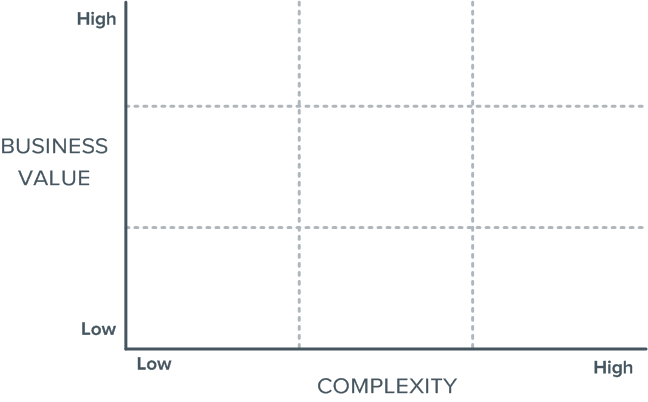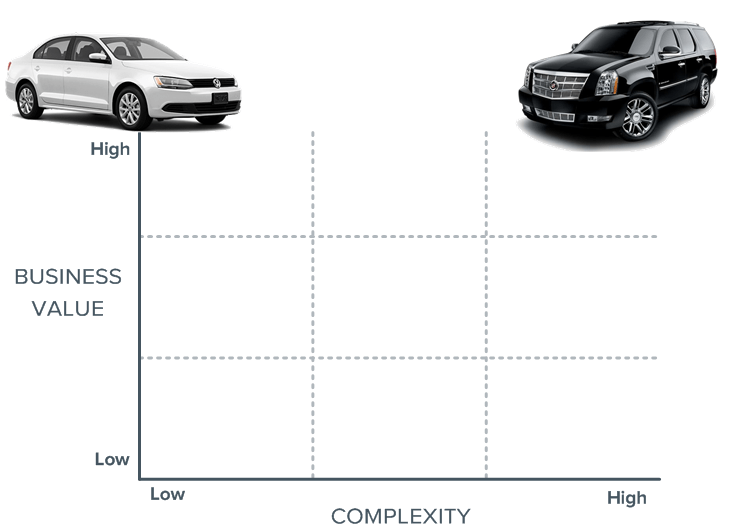I was recently engaged in a project to redesign a workflow process that was implemented last year. The client was planning to redevelop the process with a more powerful workflow technology (Nintex). Along with this, we were evaluating potential changes and enhancements to the process itself as well as the associated workflow and electronic form.
The client project team had collected a long list of these potential enhancements and we gathered for a four-day workshop to assess, prioritize and envision what the new process solution might look like. One of the first things we did in the workshop was review the project objectives. The objectives included properly aligning the form and process with an updated policy, improving acceptance and adoption of the solution and reducing the amount of time it took to get complete approval within the process. Accompanying these objectives was an overarching mandate from the steering committee and project team to keep it simple.
The first few days of the workshop were dedicated to evaluating the enhancements. We established a list of criteria to consider for consistent evaluation, including:
- rationale
- process impact
- risk
- complexity
- business value (low, medium, high)
- support effort (low, medium, high)
- priority (optional, important, essential)
Throughout day one, we found that although we had a consistent set of criteria to evaluate against, it was easy to lose focus of the purpose of the project and the guiding objectives. After debriefing at the end of the first day, we decided to approach day two with a renewed commitment to satisfy the project objectives and keep it simple, a phrase that would become the workshop mantra.
As we were getting started the next morning, we were joined by a member of the project steering committee. He stopped by to see how the workshop was going and to reiterate how important it was that our approach for this redevelopment focus on the concepts of simplicity, clarity and ease of use. He used a specific example to drive the message home, saying: “We can have the Cadillac, or we can have the Jetta. Obviously we’d love the Cadillac, and hopefully someday we’ll have the Cadillac, but right now we need to focus on the Jetta.”
After he left, the participants looked around the room at each other. Finally, someone spoke up and said, “Well I hope nobody in this room drives a Jetta!” Everyone laughed but the truth is, I own a Jetta and I love it. It’s reliable, it’s well designed and it’s well built. I got the impression that at least one of the participants was thinking of the Jetta in a negative light but I hoped it could mean something different.
In essence, the Jetta and the Cadillac are just two different vehicles; one’s a little flashier and loaded than the other. In reference to our workflow project, the Jetta represented simplicity-the very thing we were striving for. I explained to the group everything I love about my Jetta and we discussed how we could relate that back to the project. The car reference was something we all laughed at when it came up in later conversations, and I began looking for other places to include it.
An opportunity came up when we were getting ready to review how we had evaluated and prioritized the planned enhancements. I had created a matrix to plot the enhancements on business value versus complexity, and I planned to project the matrix onto the whiteboard using sticky notes to place each enhancement into the right segment.
On the whiteboard, the matrix looked like this:

I like this kind of exercise because it provides a very clear visual of the results of the evaluation. The high business value-low complexity enhancements represent potential quick-wins, and low business value-high complexity enhancements could be reevaluated (the “do we really need to do this?” part of the equation). Then, it occurred to me that I could use the Cadillac/Jetta reference to help incorporate our project goals into the activity.
I updated the matrix to the following, and when I projected it onto the whiteboard, the group was thrilled.

We’d come to an understanding about what the Jetta and the Cadillac each represented, and having them displayed with the enhancements that they represented really tied it all together.
In the end, after completing all of our prioritization exercises, we still ended up with some Cadillac enhancements (high complexity enhancements, according to the above matrix) at the top of the list, but that was okay. Projects are often influenced by things like organizational goals and objectives or even political agendas, and sometimes these things are just the bigger influencer. We weren’t able to stick strictly with the Jetta but the reference provided an example that everyone could relate to and understand, helping us to focus our discussion and have a little fun while doing it.





